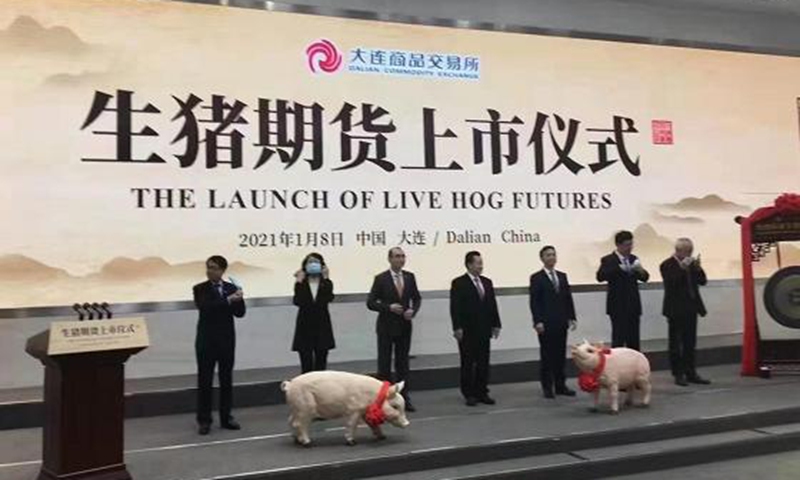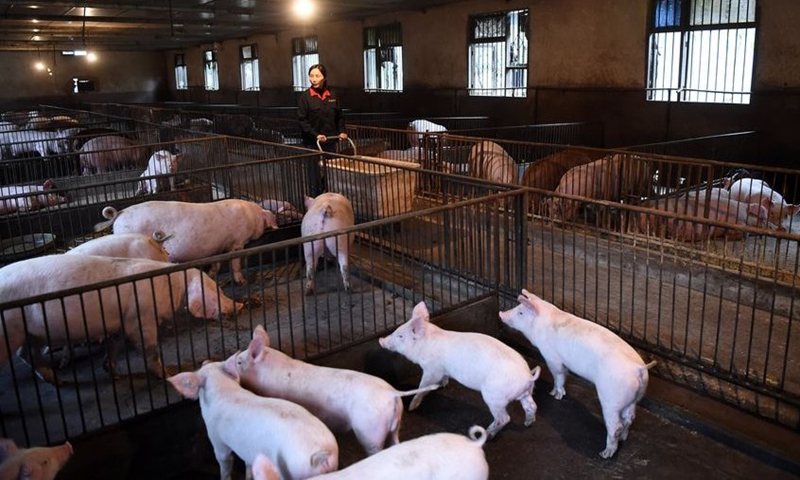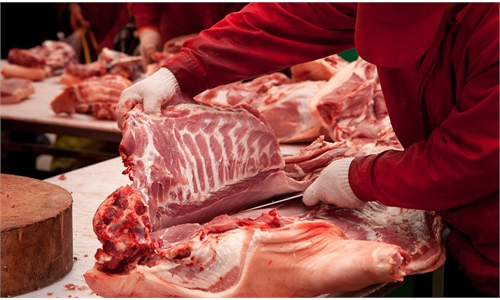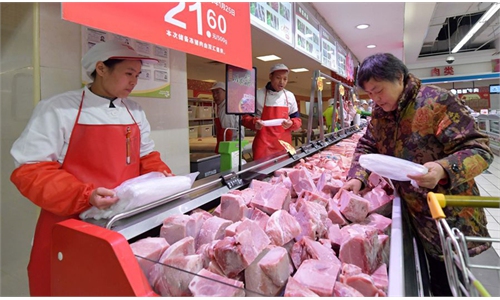
Photo: Web
After Friday's opening, the main live hog futures contract — as the first new commodity futures listed this year in China — dropped 13 percent to 26,500 yuan ($4,099) a ton, with one of the three listed hog futures contracts LH2111 extended losses to 15.99 percent, hitting its daily limit, casting a shadow on whether the futures will impact the already fluctuating hog market price.Industry insiders, however, expect hog futures will play a positive role in stabilizing prices, boosting industrial scale development and supporting targeted poverty alleviation.

Photo: Xinhua
The Dalian Commodity Exchange (DCE) announced on Thursday evening the benchmark prices for the first three contracts listed on live hog futures, with prices at 30,680 yuan ($4,736)per ton, 29,680 yuan per ton and 28,680 yuan per ton.
As the most valuable agricultural and sideline product in China, and the first live delivery futures variety, the futures are expected to ease the tightened supply of pigs ahead of booming demand during the Spring Festival in February, media reported.
However, the listing has also raised concerns about the price fluctuation of pig supplies that have already seen a rising trend amid tightened supplies and other factors.
Affected by the seasonal recovery of consumption, frozen goods logistic disruptions and other factors amid the epidemic, China's pork prices have risen significantly. In the last week of December 2020, the national average price of live pigs per kilogram was 34.8 yuan, a cumulative increase of 17.8 percent and a year-on-year increase of 3 percent, data showed.
In order to ensure smooth trading and strictly controlled risks, in the early days of the listing, the DCE set the daily limit for hog futures contracts to 8 percent of the last trading day's settlement price.
From its rise and fall limits, margin and trading limits, and other risk control parameters, the hog futures market is expected to be the most stringent risk control variety, industry experts said.
"Given the fact that the futures market is built on the basis of the extremely developed spot market, the listing of live hog futures will drive research on the long-term price of pork, which may help to reduce price fluctuations," Guo Huiyong, an independent analyst of the animal husbandry industry, told the Global Times on Friday, noting that the futures will have a positive effect on easing market fluctuations.
Monitoring data from the Ministry of Agriculture and Rural Affairs showed that from January to November in 2020, designated enterprises slaughtered 141.98 million pigs, down 19.6 percent year-on-year.
Although the supply has not fully recovered to its usual level, the central government has significantly increased the supply of meat reserves. Specifically, 20,066 tons were released on December 30, with 11,241 tons sold. Another 20,000 tons of frozen pork were released on Thursday.
Due to the gradual recovery of current industry capacity, the current market is more "pessimistic" about hog prices, eventually prompting hog futures to fall sharply on their first day of trading, experts said.
The launch of the futures as a long-term market mechanism at this particular time will offer an additional boost to the stabilization of the market price, Gao Guan, deputy director of the China Meat Association (CMA) told the Global Times on Friday.
"Hog futures have been discussed for more than 20 years, and any time they are introduced there will be mixed voices," said Gao. He predicted that pork prices may go up ahead of the Spring Festival as they do every year due to market demand. However, in the long run, the market should remain stable, with the futures playing their part.


